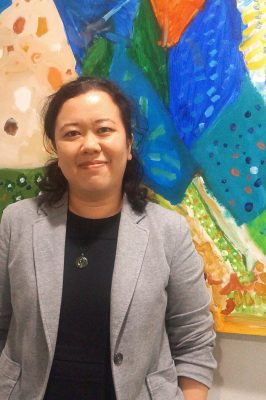Why Singapore’s English Teachers Should Embrace Singlish, Not Fight It
Is it time for Singaporean educators to embrace Singlish as a legitimate learning tool? What the Research […]
Read More
Dr Ailsa Goh explores the power of teacher language in creating a conducive and positive classroom environment to engage students. She shares preliminary findings and insights on how spoken words can influence teacher-student relationship and students’ achievement in terms of their socio-emotional development and academic performance.
The concept of positive teacher language comes from the Responsive Classroom, an approach to education that focuses on the relationship between academic success and social-emotional learning. “This whole-school approach started in America and one of its key strategies is positive teacher language,” Ailsa shares. “It is about how teachers use words, phrases, tone and pace.”
In her research study, Ailsa’s team examines its impact on teacher-student relationships and engagement of low-progress learners in a classroom setting.
“There are six types of positive teacher language but we decided to focus on just three for our study,” she says. This includes envisioning language, reminding language and reinforcing language (find out what these three languages are in the box story below).
 Improving students’ relationships with teachers through positive teacher language has positive and long-lasting impact for students’ academic and social development. When a teacher uses positive teacher language, it helps to create a supportive and conducive classroom environment for learning.
Improving students’ relationships with teachers through positive teacher language has positive and long-lasting impact for students’ academic and social development. When a teacher uses positive teacher language, it helps to create a supportive and conducive classroom environment for learning.
Ailsa feels that teachers could take advantage of the power of language to encourage and engage their students – especially lower-progress ones – to not give up on their learning. Doing so helps to foster a supportive interaction between teacher and student.
“For struggling learners, reinforcing language shows them that teachers are acknowledging their effort. This will help encourage perseverance and build teacher-student relationships,” Ailsa adds.
A challenge that most teachers face during Ailsa’s research study is that it is not easy to make positive teacher language a part of their natural teacher language. “Even at the end of the study, they are still consciously trying to use it,” Ailsa shares. “This could be due to the research design of the study where there isn’t sufficient time for teachers to internalize the language so that it can become a habit.”
One way to overcome this challenge, according to Ailsa, is to make positive language a conscious and deliberate effort. “If you know the students are going to be doing a certain task in class, then you might want to think about what you can say to set a positive tone for learning and to let them see an exciting vision of themselves learning something meaningful,” Ailsa explains. “You need to think about it and plan ahead. It is a deliberate effort.”
Another way to ensure continuation of positive teacher language is to form professional learning communities where teachers encourage and support one another through this process of change.
“Buddy teachers can observe one another in class and provide helpful feedback to improve on the use of positive teacher language,” Ailsa elaborates. “If enough teachers are using positive teacher language, students will hear a consistent message throughout their school day.”
For Ailsa and her research team, words and tone of voice can have profound effect on learners. By putting in conscious efforts to use positive teacher language, students are empowered to learn and become their best selves.